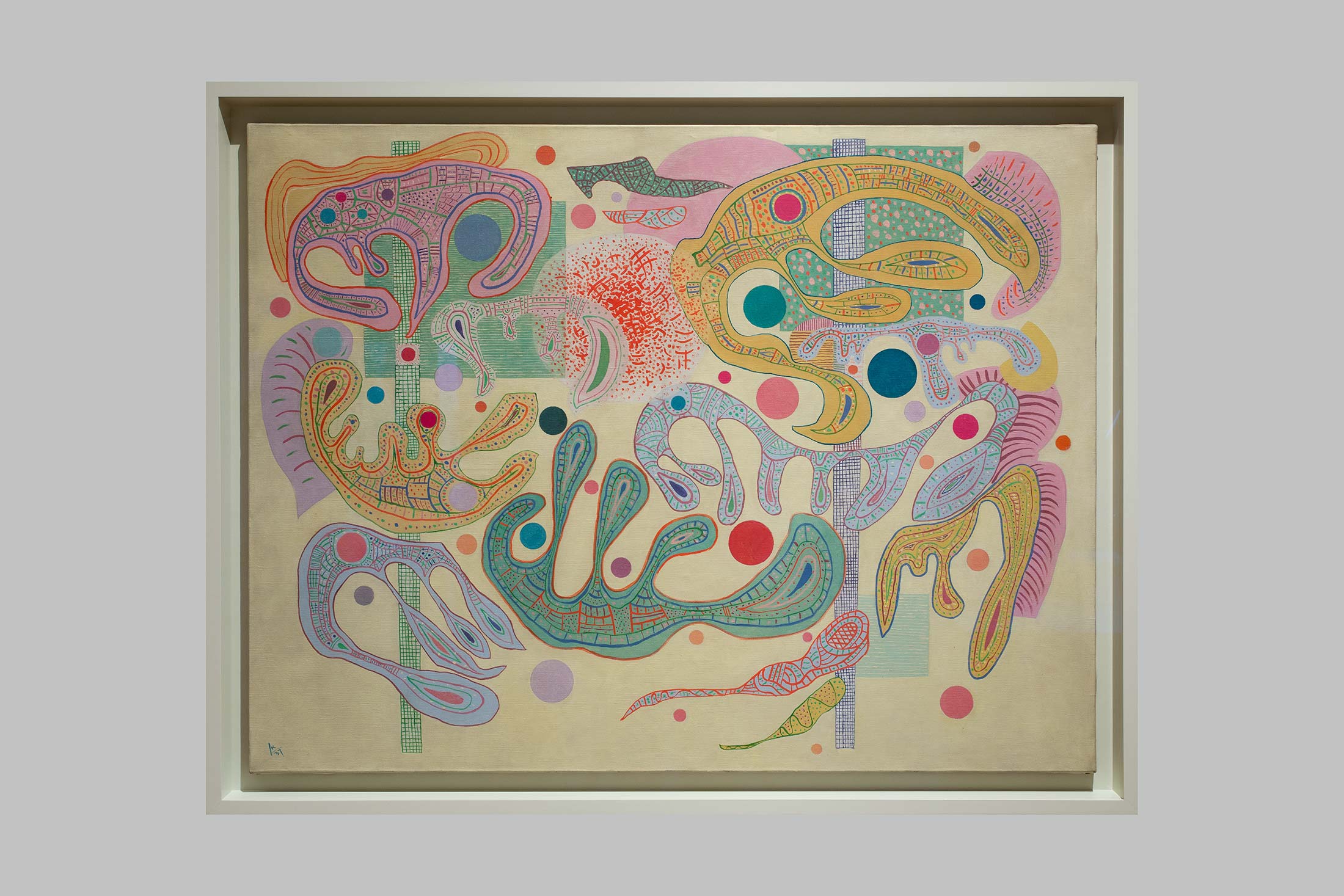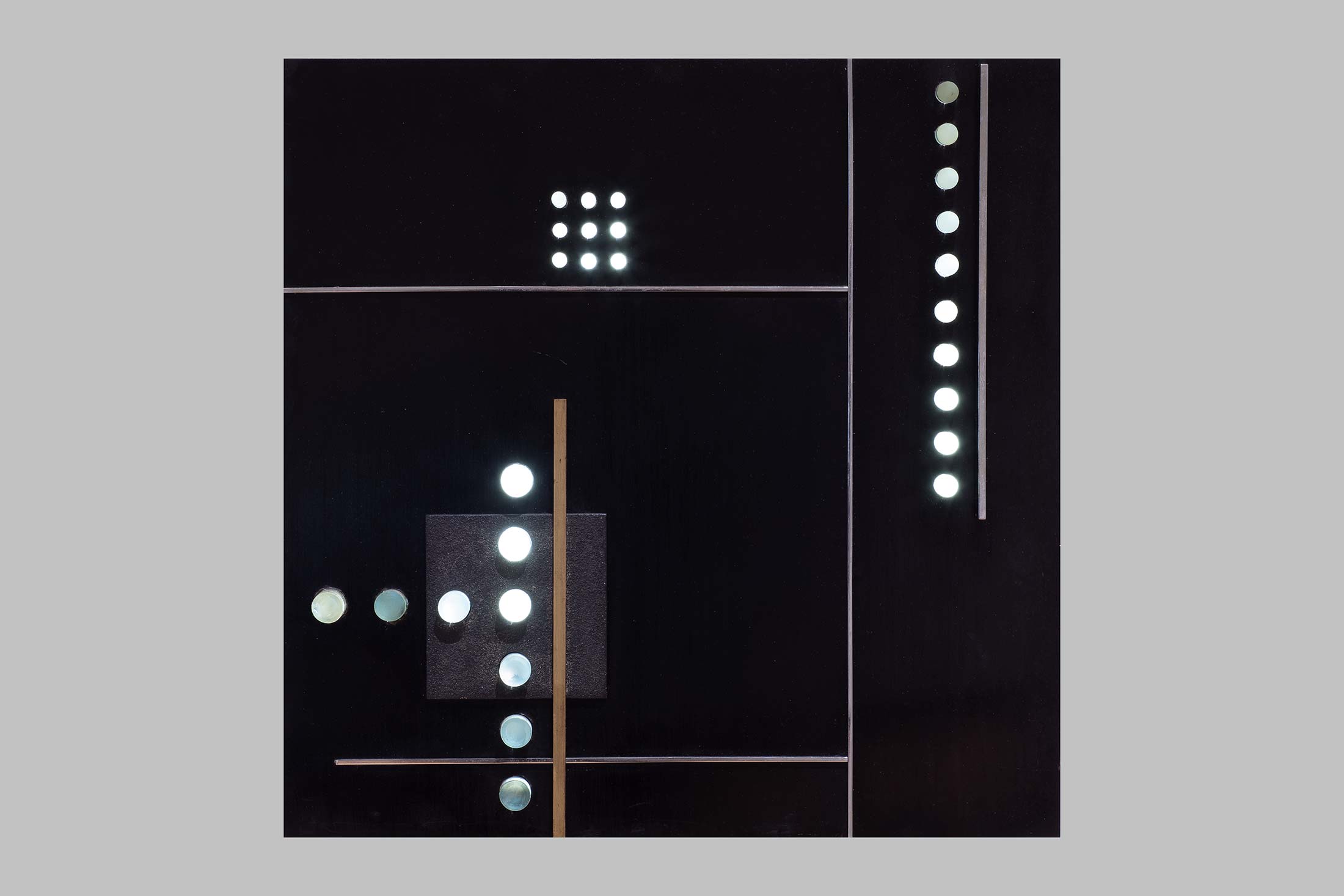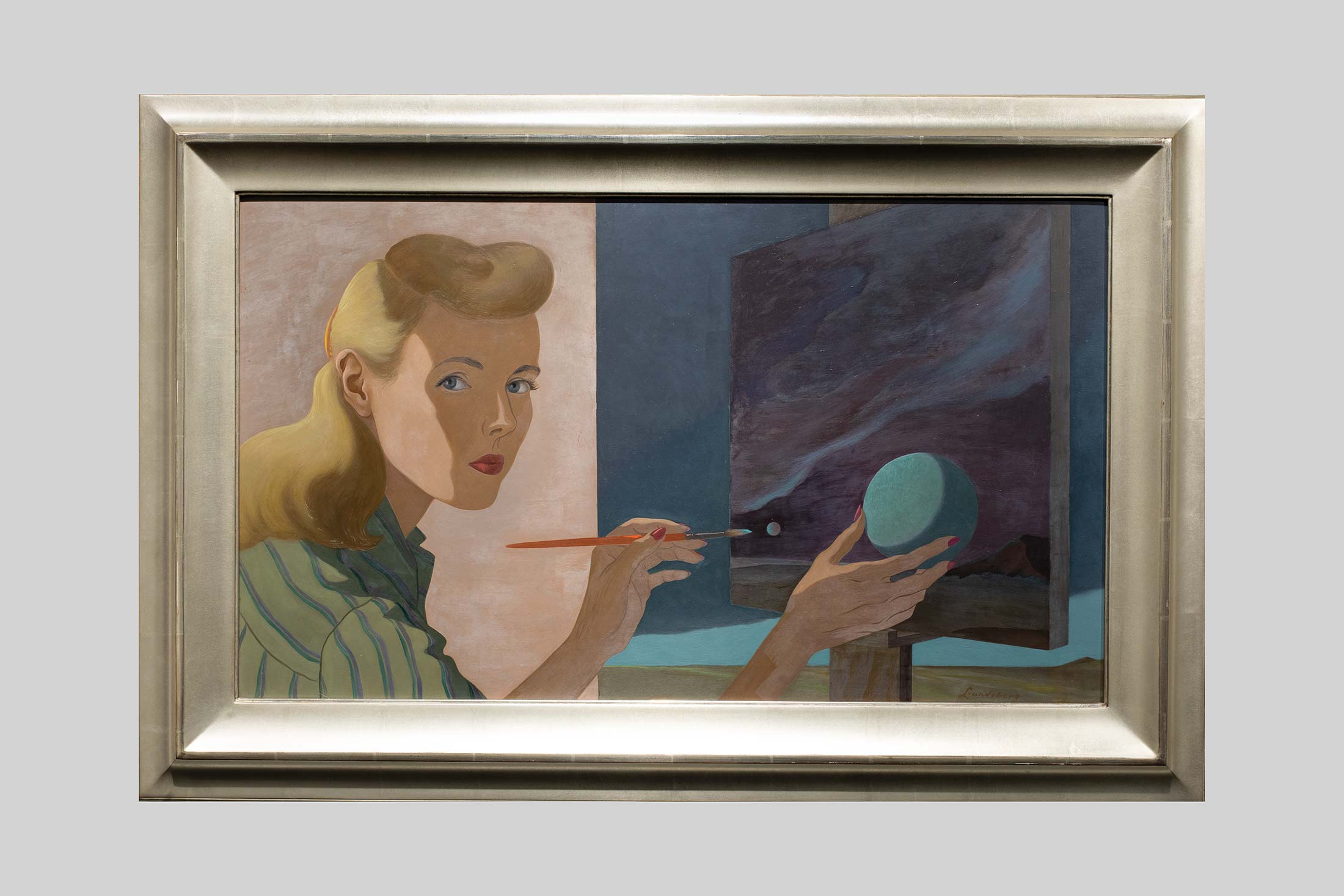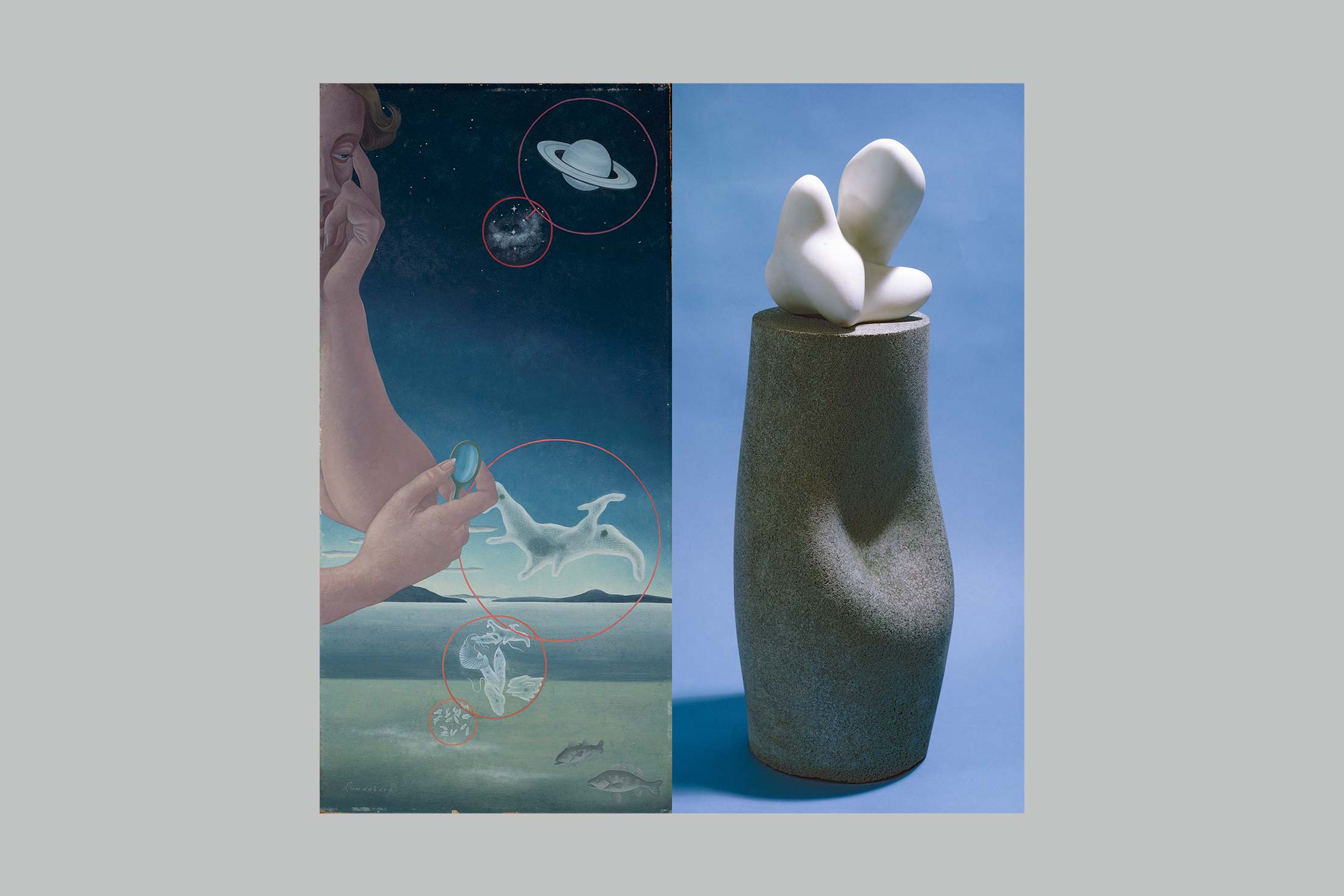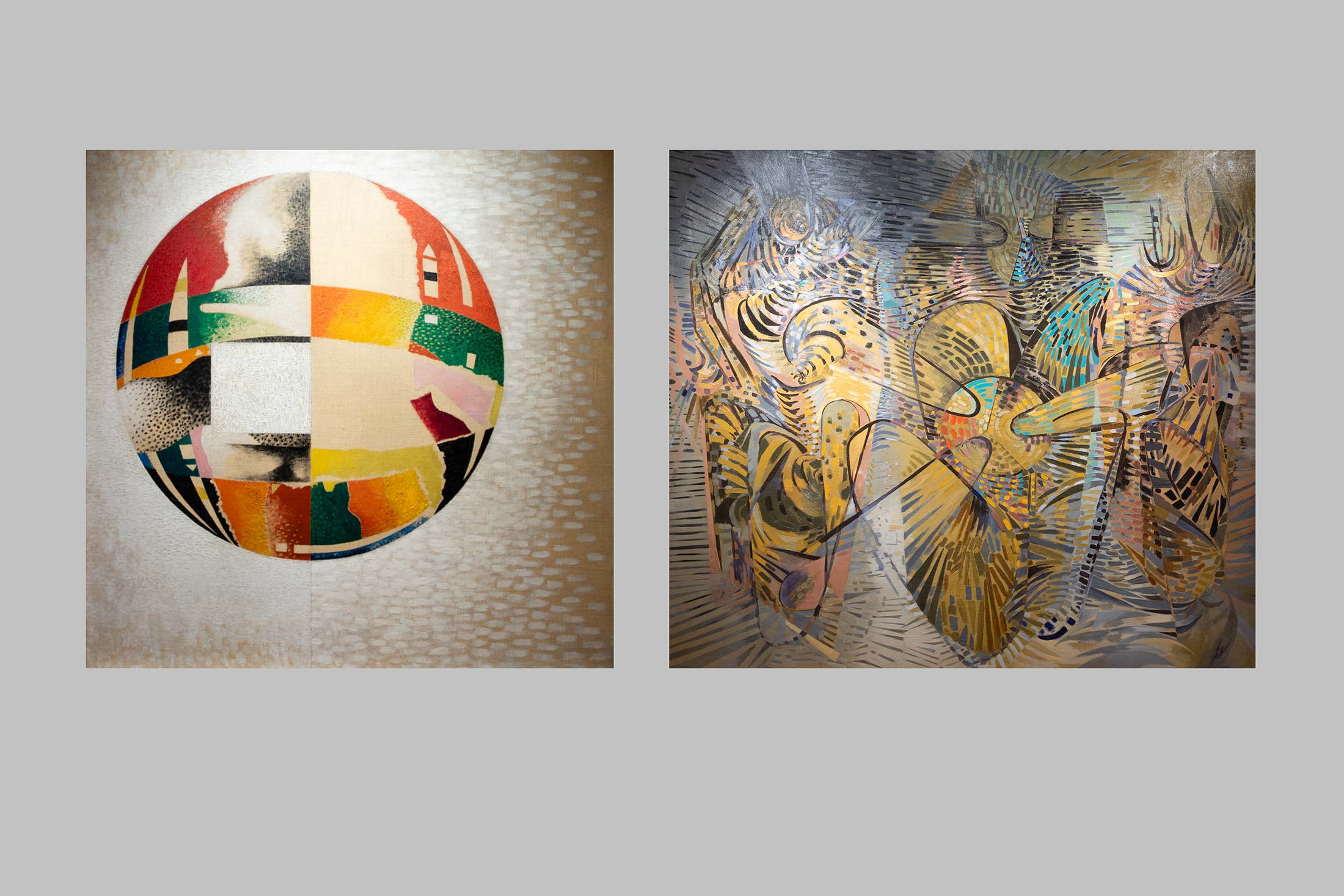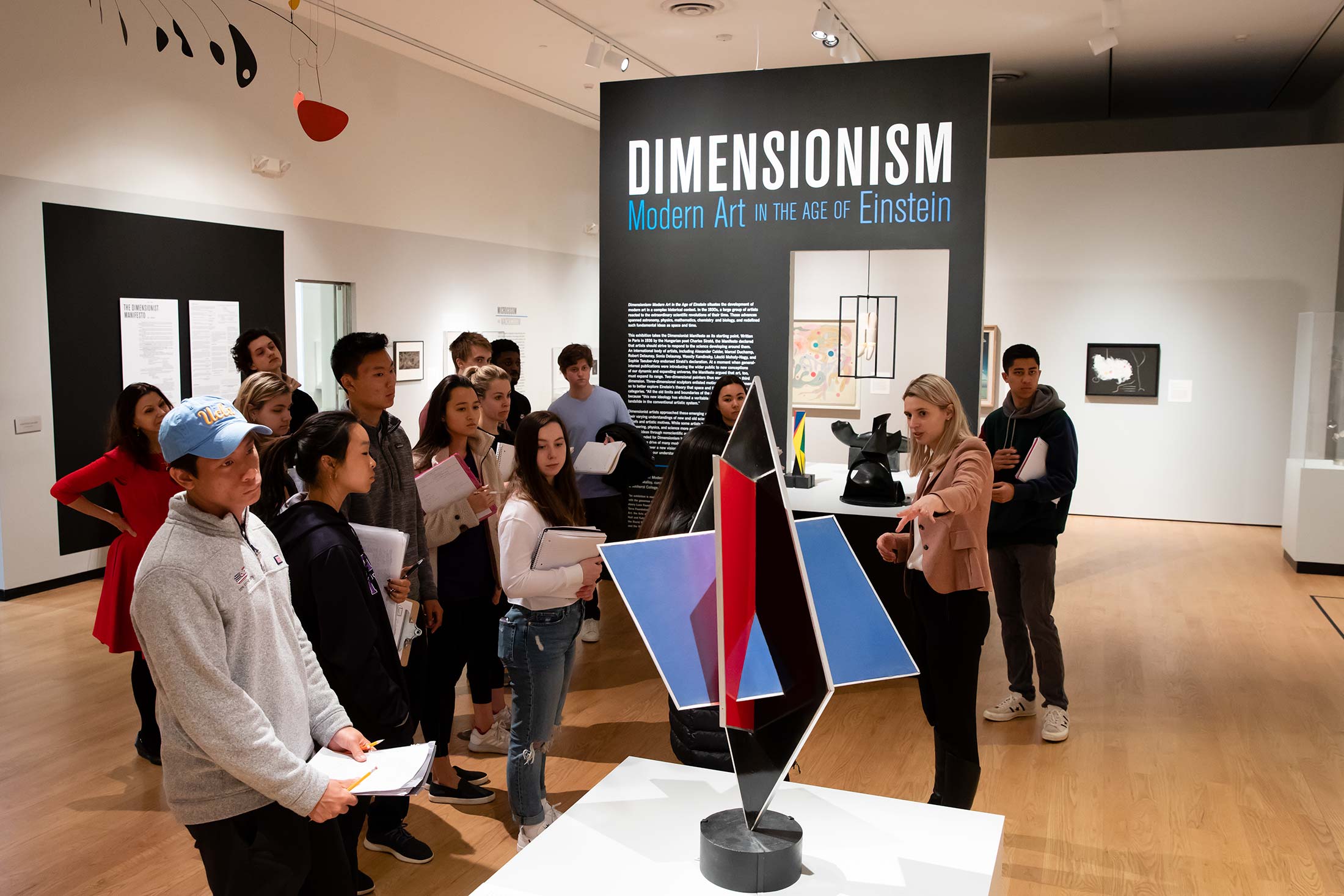
Curator Vanja Malloy gives a guided tour of the “Dimensionism” show for the students of Natasha Staller’s class “The Modern World” (cross-listed under art and the history of art; European studies; and sexuality, women’s and gender studies).
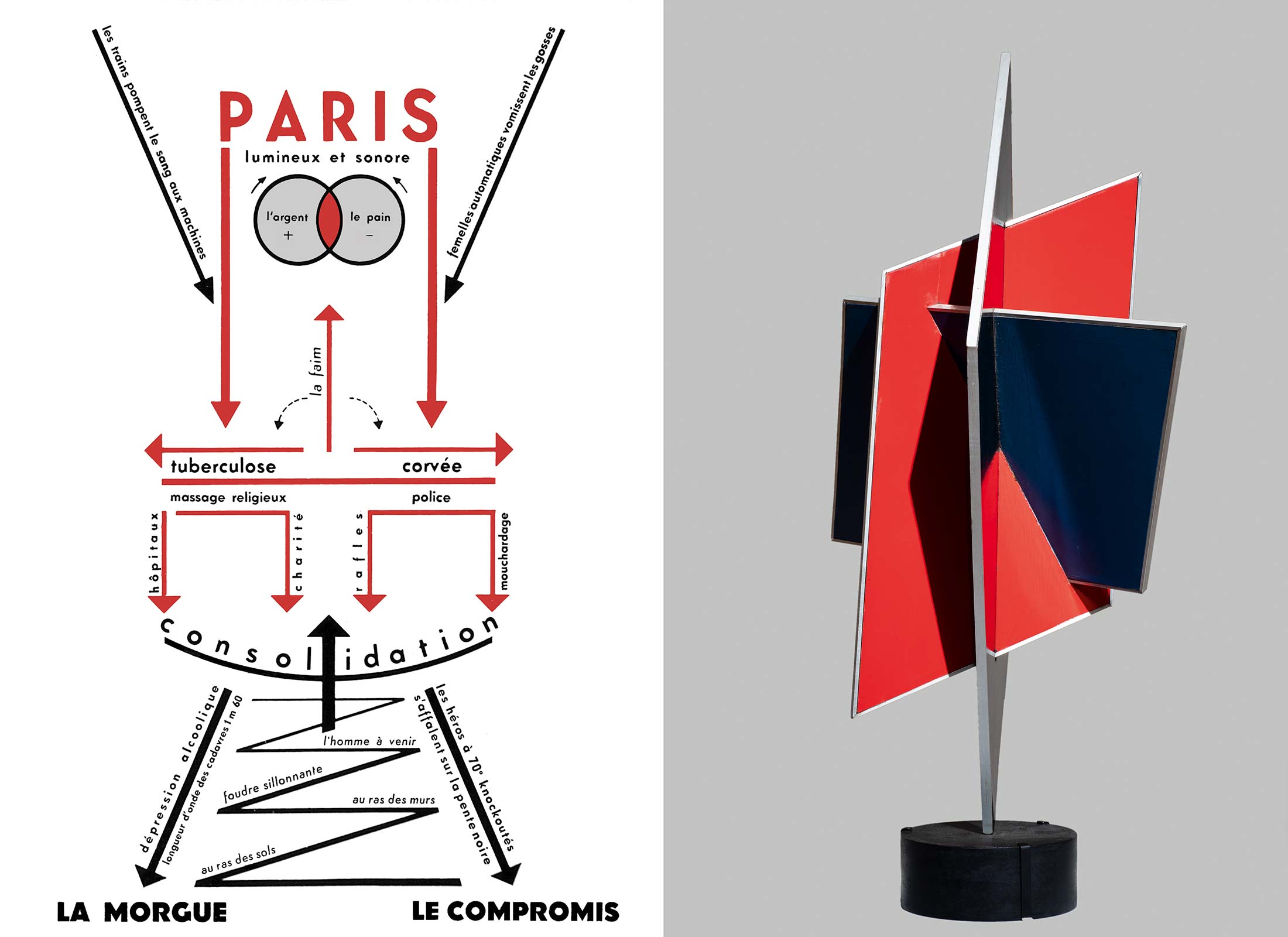
Left: An example of “planar poetry” by Charles Sirató, the poet who wrote the Dimensionist manifesto. Borrowing imagery from geometry, billboards, electric signage and directional arrows, Sirato wanted to add planes to his work and bash the tyranny of the traditional line. Here he visualizes one life path ending at “the morgue” and another leading to “compromise.”
Right: Construction (1928-1935). Frederick Kann was the fourth signer of the manifesto, and here he conjoins three painted wood planes upon a single point. Kann’s use of planar and spatial divisions, said Sirató, “represented the Dimensionist spirit.”
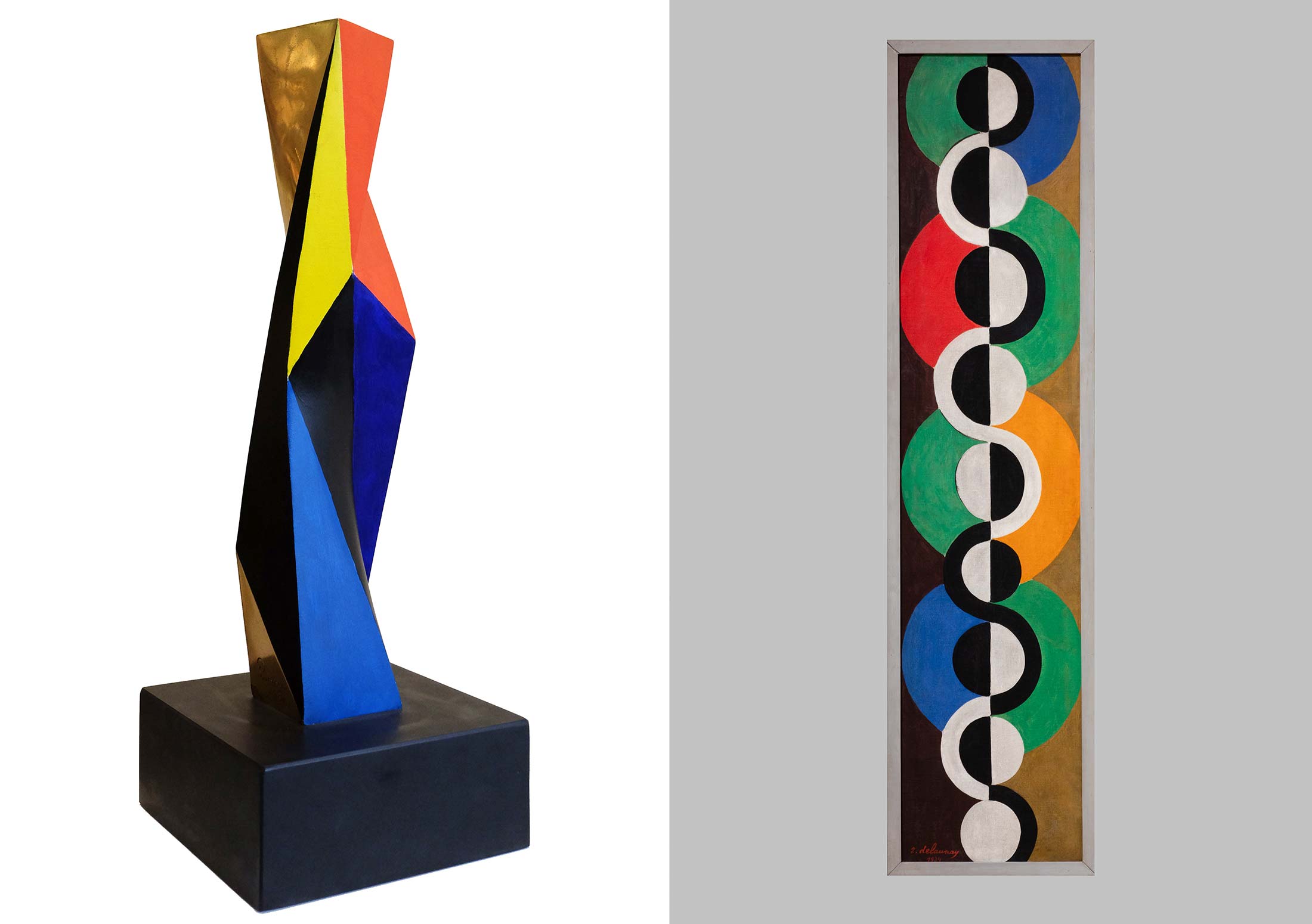
Left: Colonne (1932). This bronze polychrome sculpture (of a column) is the work of Anton Prinner, a Hungarian painter, engraver and sculptor. Colonne plays with the concept of dimensional expansion by forging the notion of fragmented space with its vibrant, irregular and angular sides. Prinner was friends with Sirató and Picasso, who called him “the small man who makes large statues.”
Right: Rhythm San Fin (1934). Robert Delaunay and his wife, the artist Sonia Delaunay, were inspired by the invisible spectrum of electromagnetic waves. Robert Delaunay here represents that spectrum in gouache on canvas. “A New Reality [that] imposes itself outside all known Realisms,” as he wrote. “Electric light as rhythm. Rhythm as subject.”
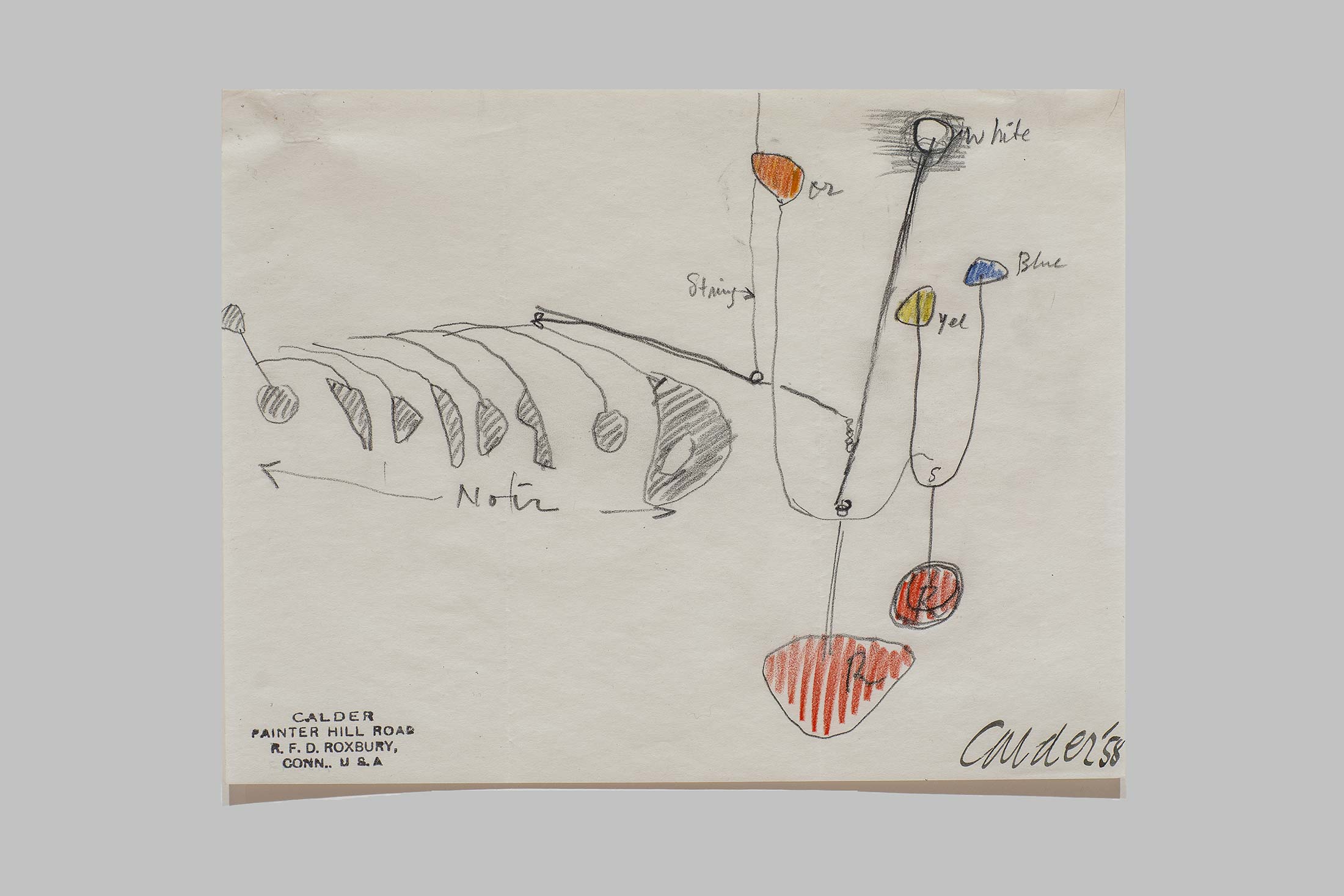
Sketch for Lobster Trap and Fish Tail (1937). After viewing the 1925 solar eclipse—from the campus of Columbia University—Alexander Calder was later moved to add actual movement to his art, once photos of the eclipse proved that stars are not static but kinetic. Note the Roxbury, Conn., place stamp, where other émigré Dimensionist artists congregated too.
Study for Lobster Trap and Fish Tail (1937–38). Calder was influenced by the biomorphic forms of Joan Miró and the choreography of Martha Graham. To make his sculptural mobiles move, early on, he generated them with small motors. Later he strung his mobiles, minus the motors, so that air currents supplied random motion. This study is built of painted sheet iron and wire: the finishedLobster Trap and Fish Tail, at MoMA, spans more than 9 feet. This video’s accompanying music is by Luis Alvaz (Wikimedia Commons).
